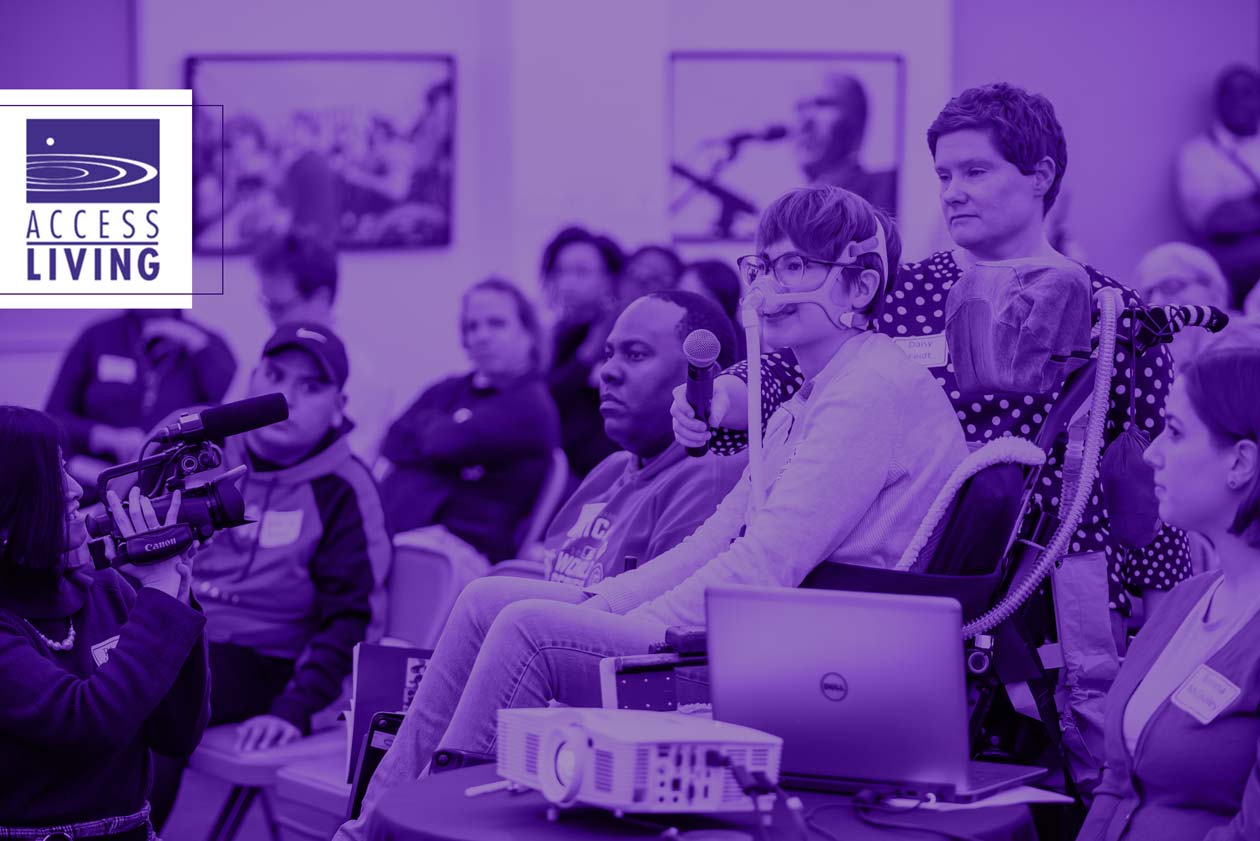
Improving accessible communications for a national leader in disability rights advocacy
Access Living
Here’s how Mightybytes helped disability rights advocacy leader Access Living improve communications and content management while achieving the highest levels of web accessibility.
Mightybytes was a wonderful partner on our website project. We worked through accessibility challenges together as they arose and built a website our users love. The project stayed on time and on budget too. We look forward to continuing to work with Mightybytes as our website needs grow.
— Bridget Hayman | Director of Communications | Access Living

Key
Points
AAA
Accessibility
This website achieved level 'AAA' of the Web Content Accessibility Guidelines (WCAG) at launch.
3
User Testing
Three qualitative user testing sessions ensured optimal usability and accessibility of the final product.
6
Project Duration
From contract signing to launch, the initial site redesign project lasted just over six months.
152
Software Updates
To keep the site safe and secure, we've made 152 software updates and counting since launch.
Project
Requirements
Access Living is dedicated to ensuring that people with disabilities can live freely and independently.
To meet their community’s needs, the organization had several key requirements for this project:
- First, they needed a website with level ‘AAA’ for website accessibility, the highest level of the Web Content Accessibility Guidelines (WCAG).
- An easy-to-use content management system (CMS) was also critical, as the current system required a full site copy download each time they made even simple updates.
- They also needed ongoing support in creating, managing, and migrating content as well.
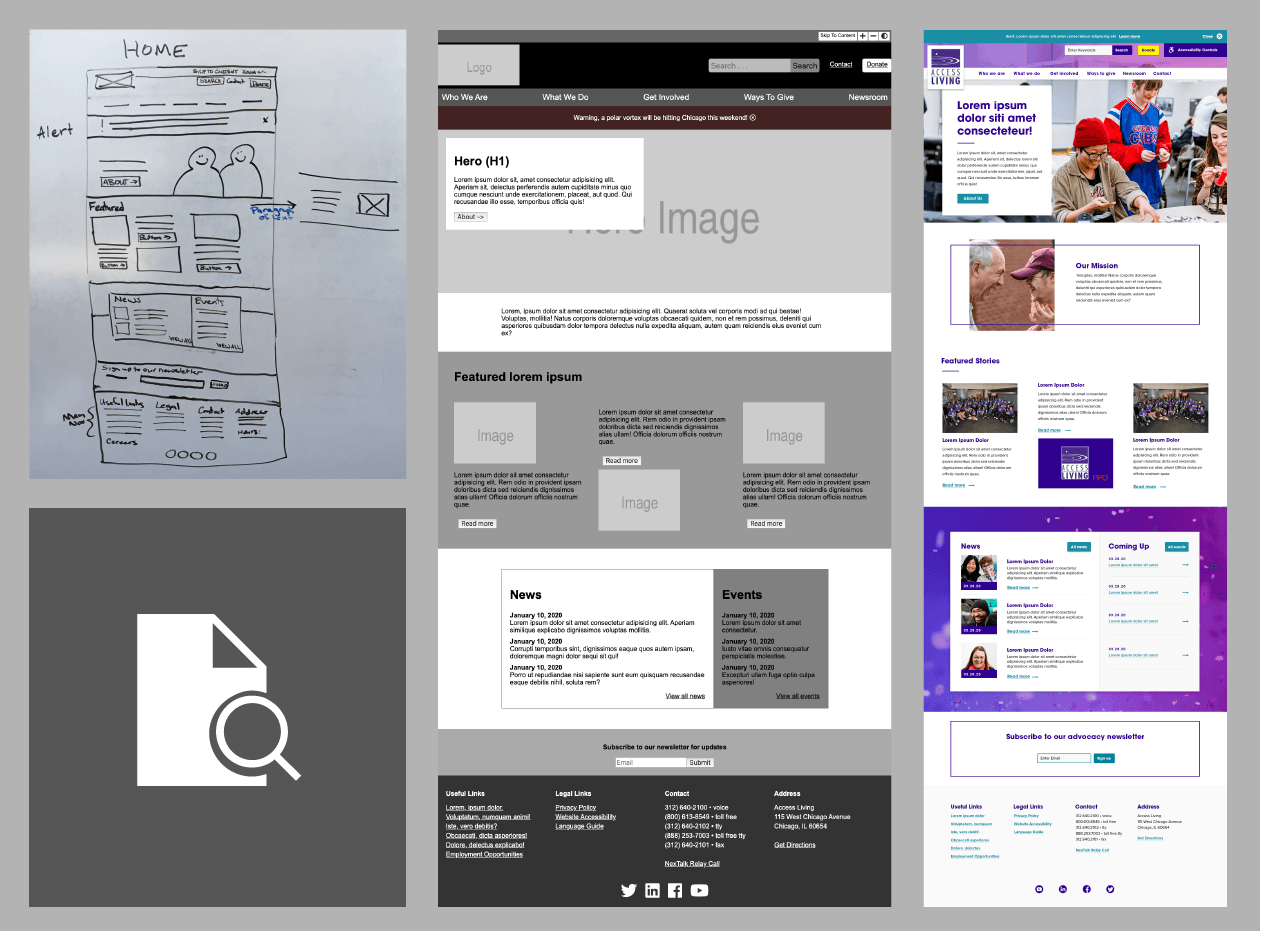
Universal
Design
Access Living’s audience includes people with disabilities, members of the press, potential donors, and people searching for legislative topics like the Americans with Disabilities Act.
To ensure a great experience for all users, website content must be easy to find and understand no matter which device, platform, or assistive technology someone uses. Site content should also inspire people to take action.
Committing to AAA-level standards also required us to account for as many accessibility needs as possible. For example:
- How would people with different physical disabilities, such as blindness, hearing impairments, or mobility challenges, interact with the site?
- Would the information be easily understood by people with cognitive disabilities?
- How might the site provide a good experience for people in low-bandwidth areas or those with older devices?
Answers to these and related questions served as key drivers for design, content, and functionality requirements throughout the project.
Brand
Accessibility
At the project’s outset, Access Living provided us with organizational brand assets, such as their logo, a color palette, fonts, and so on.
Unfortunately, some colors did not meet accessibility standards for contrast. Prior to starting the site design process, our team updated brand colors to maintain visual identity while also ensuring access to more users.
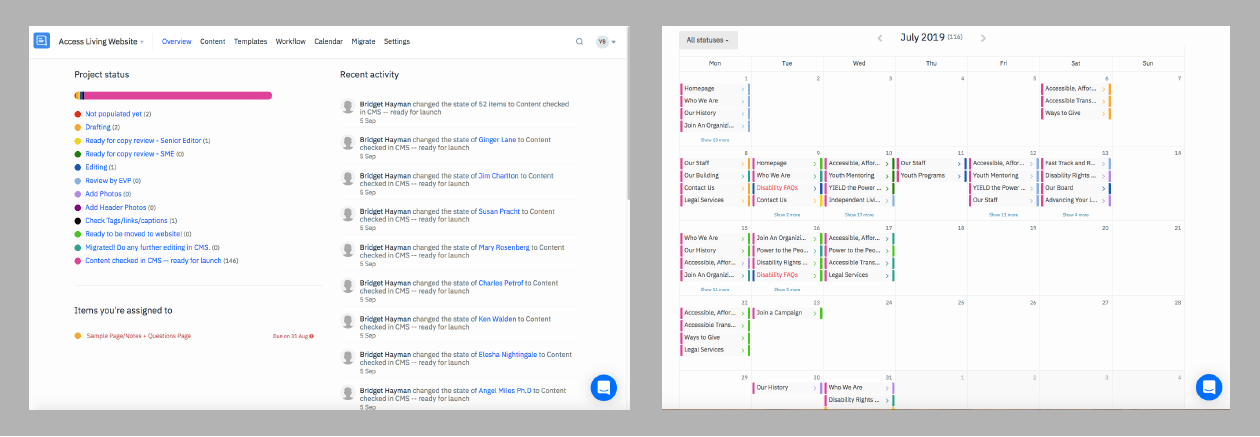
Defining
Success
After a kickoff call, we ran a product roadmapping workshop with key Access Living stakeholders to define success criteria.
Example exercises included:
- Understanding business goals
- User profiles and motivations
- Information architecture and navigation
- Visual design guidelines
- Technical specifications
This process helped us build consensus on the best path forward.
We also helped Access Living’s team create and migrate site content. Meanwhile, the Mightybytes team began designing a system to help Access Living meet its goals.
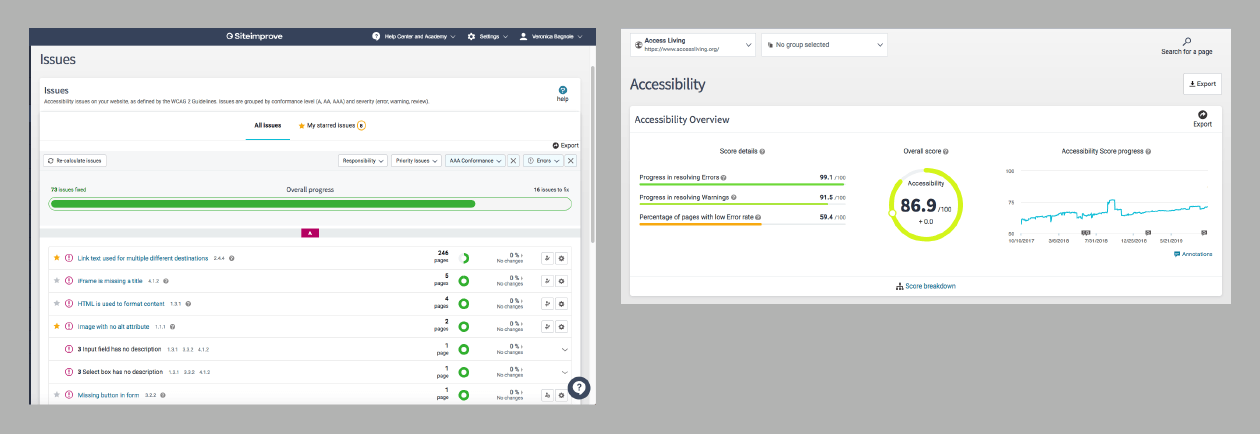
Prioritizing
Accessibility
To meet our collective goal of launching an AAA-level accessible website, we partnered with our friends at SiteImprove.
SiteImprove is a website optimization platform that helps people address issues impacting a website’s accessibility, SEO, content quality, data security, and more. The company donated the use of their platform for this project.
These tests helped us assure quality deliverables and maintain high accessibility requirements throughout the redesign process. We also worked with Access Living’s team to test site content with people using various assistive technologies.
At launch, key website accessibility features included:
- Accessibility controls: Features that allow users to increase contrast or change font size
- Keyboard access: Specific features to enable page content and navigation access via a keyboard.
- Assistive technology: Image alt text and ARIA labels for page elements ensure content can be read by screen readers and other assistive technologies.
- Contrast: High color contrast for text and links improved usability for people with visual impairments.
- Iconography: Use of icons to differentiate news categories improved navigation for people with cognitive disabilities.
- Rollovers: Visually distinct hover states for links ensure improved usability as well.
- Inclusive language: Similarly, using plain language, short sentences, and an active voice made the site easy for a diverse audience to understand, regardless of background, education, or ability.

Post-Launch
Performance
When we embarked on this project, Access Living and Mightybytes collectively identified five important goals:
- Increase online visibility for Access Living
- Effectively communicate the organization’s story via the website
- Ensure a well-built, well-designed website that meets the highest standards of web accessibility
- Create easy-to-use navigation with readily available information
- Engage and educate donors about the organization’s programs
After launch, we immediately began collecting quantitative performance data to understand how well the site performed against the goals above. We have worked with Access Living since to implement website improvements based on data collected, including new and updated features.
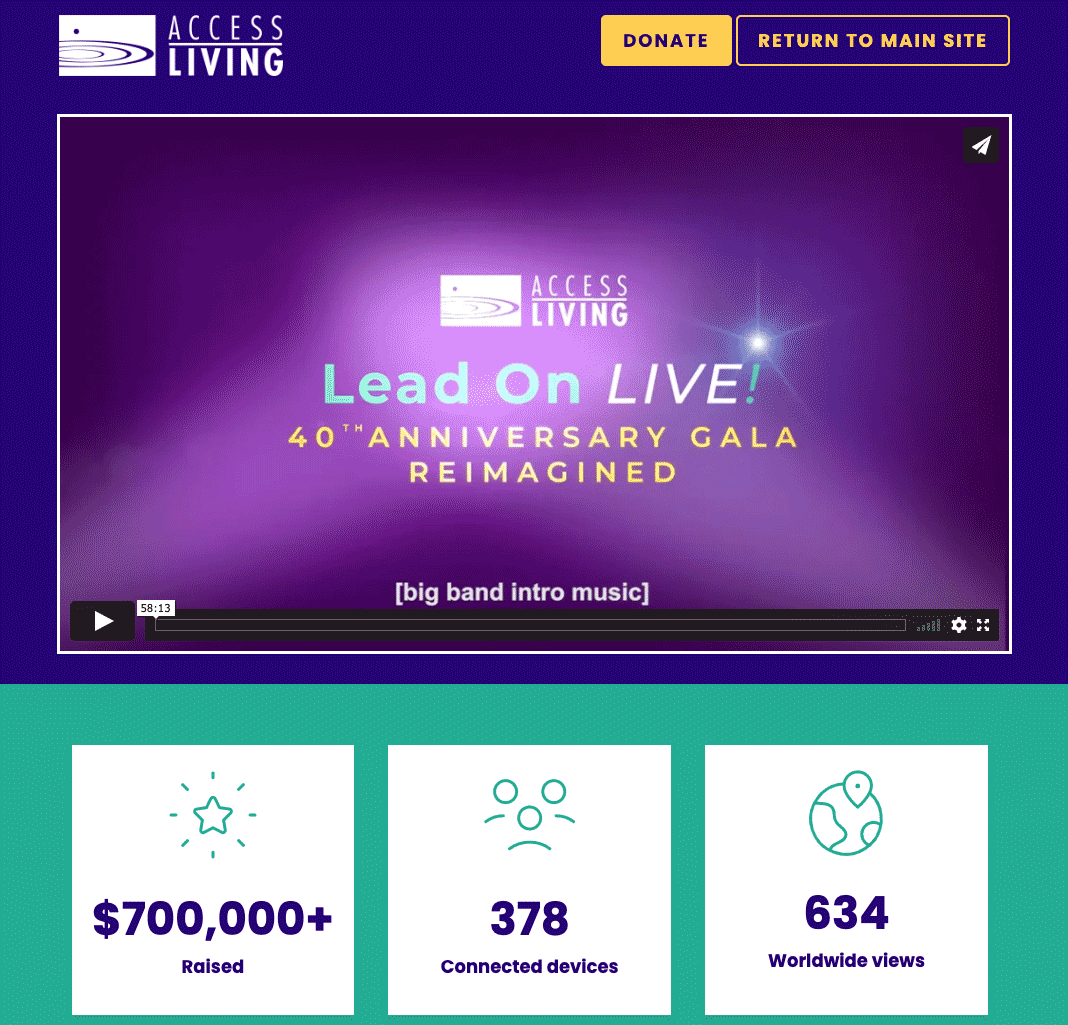
Virtual Fundraising
Events
Due to the global coronavirus epidemic, Access Living needed to reimagine their annual fundraiser in 2020.
They enlisted Mightybytes’ help to transform the in-person gala into a lively and accessible virtual event that could be experienced by people who use assistive technologies. They embarked on this journey with a few core goals.
- The website should serve as a hub for event-related content.
- Online donations should be simple to make and, if possible, update tallies in real-time.
- The hub should include a livestream with polls, statistics, and other engaging features during the event.
- Costs should be kept reasonable.
To accomplish this, we worked across several third-party platforms to promote, fundraise, and host the event.
- We created a custom splash page to promote the gala.
- We also created a handful of event-specific components to give Access Living the flexibility it needed to showcase sponsor information, statistics, and a registration form.
- By researching third-party platforms, we could embed donation forms directly into event pages.
- A custom-branded live event page provided video streaming, real-time data, and interactive chat features.
Finally, we helped Access Living create a lasting internal process for hosting future virtual events. The organization has since put this to good use many times.
Since the first virtual event in 2020, Mightybytes has helped Access Living create an online resource for their annual gala fundraiser every year. This helps the organization raise important funds while providing a meaningful experience for people who cannot attend the event in person.
Long-Term
Shared Success
We’re proud to support Access Living’s important disability rights advocacy work since early 2019. When organizations collaborate based on mutual trust and respect, we can achieve great things together.
During this time, we have implemented multiple projects that move the organization closer to their goal of ensuring that people with disabilities can live freely and independently with dignity.